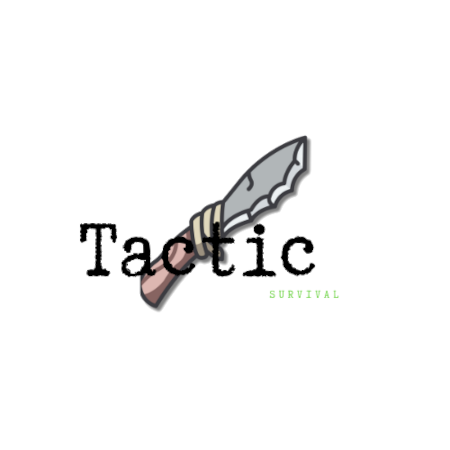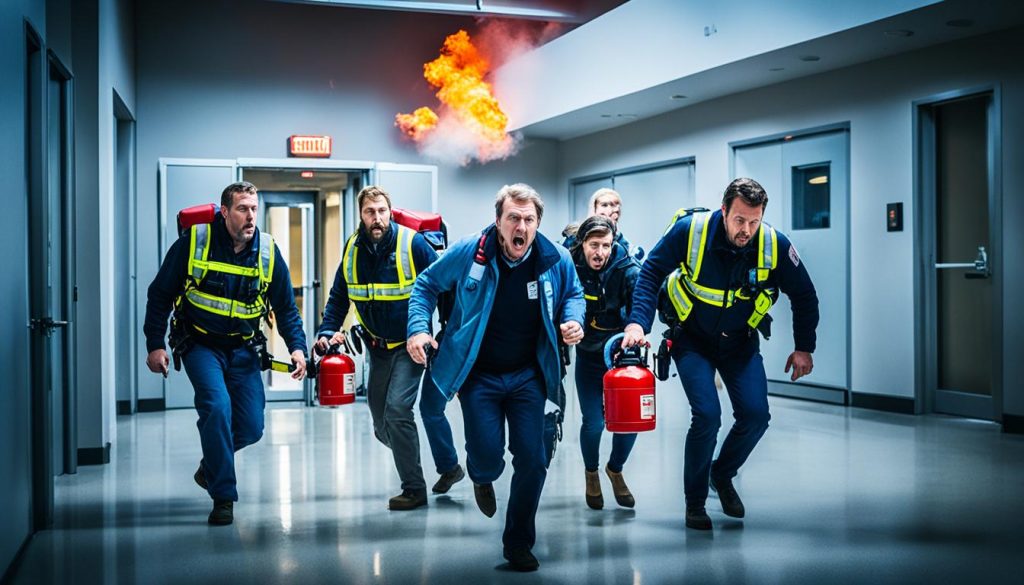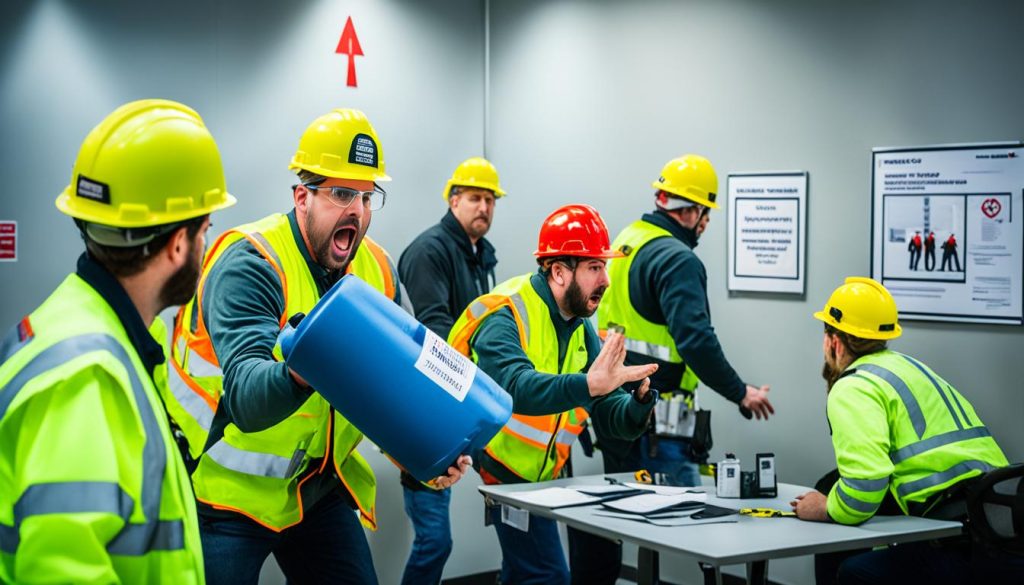Did you know that conducting effective disaster drills can significantly improve an organization’s response to emergencies? Whether it’s extreme weather, earthquakes, or threats of violence, being prepared is key to minimizing the impact of these events. According to FEMA, a well-planned and executed disaster drill can be a game-changer in ensuring workplace safety and emergency preparedness.
Key Takeaways:
- Disaster drills are crucial for improving an organization’s response to emergencies.
- Effective drills should be realistic, interactive, and focused on testing the plan.
- The planning stage of a drill can vary depending on the scale and goals of the event.
- Involving critical partners and assigning roles to participants are vital for a successful drill.
- After the drill, evaluation and feedback are essential for continuous improvement.
The Importance of Conducting Disaster Drills
Conducting disaster drills is crucial for ensuring workplace safety and emergency preparedness. These drills allow organizations to test and improve their response to various emergencies, such as natural disasters and threats of violence.
Disaster response simulations, crisis management drills, and incident response exercises help organizations identify strengths and weaknesses in their emergency plans. By simulating different scenarios, these drills enhance coordination and communication among team members, enabling them to respond effectively in real-life situations.
Research has shown that individuals who have undergone emergency drills and training feel more prepared to face emergencies and are more likely to respond effectively. For example, in the event of a fire, an employee who has practiced using an emergency route repeatedly has a better chance of safely exiting the building.
These drills are particularly crucial in the healthcare industry, where preparedness can mean the difference between life and death. Thorough planning and practice can make a significant difference when a healthcare organization faces an emergency, ensuring the safety of both staff and patients.
By conducting regular disaster drills, organizations not only improve their response capabilities but also build a culture of preparedness. Employees become familiar with emergency procedures, gain confidence in their abilities, and develop a proactive mindset when it comes to workplace safety.
Overall, disaster drills play a critical role in ensuring that organizations are equipped to handle emergencies effectively. They provide valuable insights, foster teamwork, and minimize the potential impact of crises on operations and personnel.
Tips for Conducting Effective Disaster Drills
When it comes to disaster preparedness, conducting effective drills is key to ensuring the safety and readiness of your organization. By following these tips and guidelines, you can plan and execute drills that are realistic, engaging, and provide valuable insights into the strengths and weaknesses of your emergency plans.
- Define clear objectives: Before conducting a disaster drill, clearly define the objectives and scope of the exercise. Identify the specific skills and behaviors that need to be assessed or improved.
- Match drill format to objectives: The type and format of the drill should align with the objectives. Consider the resources and logistics required to carry out the drill effectively.
- Engage stakeholders: Involving key stakeholders such as staff, managers, partners, and the public is crucial for a successful drill. Their engagement and input can enhance the realism and relevance of the exercise.
- Assign roles and responsibilities: Designate specific roles and responsibilities to participants, including a controller, responders, simulators, evaluators, and a safety officer. Clear assignments ensure a coordinated and effective drill.
- Communicate and coordinate: Prioritize communication and coordination with critical partners, such as local public safety agencies and neighboring offices or businesses. Collaborating with external stakeholders enhances the drill’s overall effectiveness.
- Create realistic scenarios: Kick off the drill with a mock situation that mimics a potential hazard. Introduce unexpected obstacles to test the team’s decision-making under pressure.
- Evaluate and gather feedback: Once the drill is complete, thoroughly evaluate its performance. Identify strengths and weaknesses, gather feedback from participants, and address any shortcomings encountered during the exercise.
By following these tips, you can ensure that your disaster drills are well-planned, executed smoothly, and provide valuable learning opportunities for your organization.
Efficient coordination leads to effective disaster drills
Effective coordination and communication are essential for successful disaster drills. Involving all relevant stakeholders will enhance the realism and relevance of the drill, while clear assignments and defined roles will ensure that participants understand their responsibilities. By focusing on these key elements, your organization can conduct drills that enhance disaster preparedness and improve emergency response.
Types of Emergency Drills
Organizations can conduct various types of emergency drills to improve their preparedness and response capabilities. These drills play a crucial role in workplace safety and crisis management exercises.
1. Fire and Evacuation Drills:
Fire and evacuation drills are commonly performed to ensure workplace safety and preparedness. These drills focus on practicing evacuation procedures, identifying evacuation routes, and ensuring that employees are familiar with assembly points. By conducting regular workplace safety drills, organizations can effectively mitigate the risks associated with fires and other emergencies.
2. Lockdown and Shelter-in-Place Drills:
Lockdown and shelter-in-place drills are essential for situations where employees need to stay in a specific location. These drills involve practicing procedures to secure the facility and protect individuals from immediate threats or environmental hazards. By conducting these emergency response drills, organizations can enhance their crisis management capabilities.
3. Tabletop Simulations:
Tabletop simulations are interactive drills that involve facilitated discussions of hypothetical scenarios to review and improve emergency response plans. Participants simulate their responses and discuss potential actions, allowing organizations to identify weaknesses, refine their strategies, and enhance their crisis management exercises.
4. Functional Simulations:
Functional simulations are more realistic scenarios that involve multiple functions or agencies using simulated command centers and communication systems. These simulations provide a real-world environment to test the coordination, communication, and decision-making capabilities of an organization during a crisis. By conducting functional simulations, organizations can identify gaps in their response plans and improve their overall crisis management strategies.
5. Full-Scale Simulations:
Full-scale simulations are live-action scenarios that use real equipment, personnel, and locations to test an organization’s response to a complex and realistic emergency situation. These drills provide an opportunity to evaluate the effectiveness of emergency plans, assess the coordination among different departments, and identify areas for further improvement. By conducting full-scale simulations, organizations can enhance their preparedness and response capabilities in crisis situations.
Each type of emergency drill serves a specific purpose and contributes to the overall preparedness and response capabilities of an organization. By incorporating a combination of workplace safety drills, emergency response drills, and crisis management exercises into their training programs, organizations can ensure the safety of their employees and minimize the impact of emergencies on their operations.
For more information on conducting workplace safety drills and emergency preparedness training, visit https://emergencymanagement.illinoisstate.edu/training/drills-exercises/.
Conclusion
Conducting effective workplace safety drills and emergency preparedness training is essential for organizations to ensure the safety and well-being of their employees, as well as their ability to respond effectively in various emergencies. By following the tips and guidelines discussed in this article, organizations can plan and execute disaster drills that are realistic, engaging, and provide valuable insights into the strengths and weaknesses of their emergency plans.
Regular drills help build a culture of preparedness, allowing employees to become familiar with emergency procedures and develop the necessary skills to handle different scenarios. Whether it’s fire and evacuation drills, lockdown drills, tabletop simulations, functional simulations, or full-scale simulations, these drills allow organizations to test their response capabilities and identify areas for improvement.
Furthermore, conducting disaster drills also involves disaster drill planning, where organizations carefully consider the objectives, scope, and resources needed for the drill. Evaluating the performance of the drills and incorporating feedback from participants and stakeholders is crucial for continuous improvement and enhancing emergency preparedness.
By dedicating time and effort to workplace safety drills and emergency preparedness training, organizations can minimize the impact of emergencies on their operations and ensure the safety and well-being of their employees. For more information on drills and exercises, visit https://emergencymanagement.illinoisstate.edu/training/drills-exercises/.


